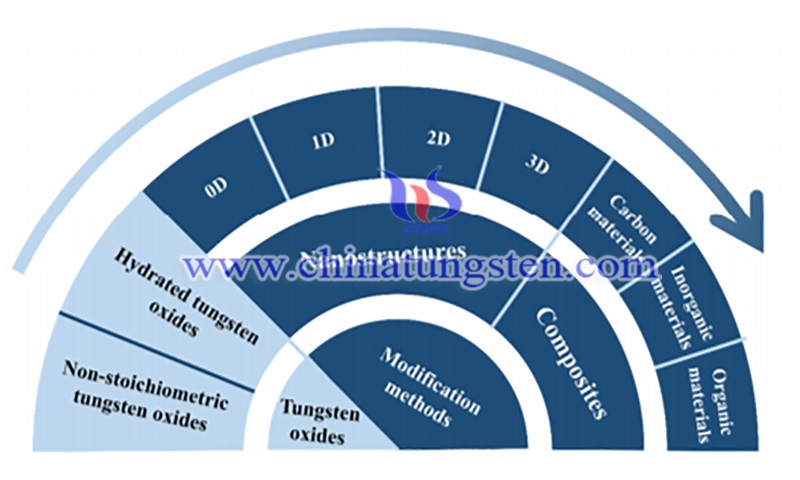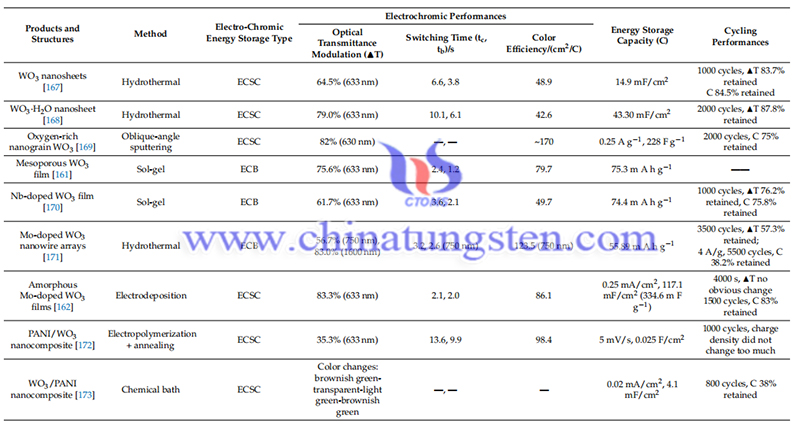Dynamic Control of Visible and NIR Light in Tungsten Oxide Electrochromic Devices
- Details
- Category: Tungsten's News
- Published on Sunday, 12 February 2023 18:59
When the tungsten oxide material is used in the electrochromic (EC) window of electrochromic devices (ECD), three modes can be achieved, namely, a bright mode when the transmittance of both visible and near-infrared light is relatively high; a cool mode when the transmittance of visible light is high and the transmittance of near-infrared light is relatively low; and a dark mode when the transmittance of both of them is low. cooling mode when the transmittance of both is low; and the dark mode when the transmittance of both is low.
Researchers synthesized oxygen-deficient tungsten-oxide nanowires capable of independently controlling the transmittance of near-infrared and visible light. The films showed a bright mode when the potential applied to the active film was 4.0 V, a cool mode when the potential was between 2.8 and 2.6 V, and a dark mode when the potential was 2.0 V.

It is reported that amorphous and polycrystalline WO3 react differently to light; that is, the light absorption peaks of amorphous WO3 are more blue-oriented than those of crystalline WO3. Lia et al. prepared WO3 films with mixed phases to tune the transmission of visible and near-infrared light. Their fabricated WO3 flexible ECDs were reported to have three different light absorption modes, as both amorphous and hexagonal phases of WO3 were observed in the films. When the applied potential is lower than 1.1 V, the response in the near-infrared region is more active due to the action of the hexagonal part of WO3, while at higher voltages, the response in the visible region where the amorphous part is active is reduced.
As mentioned above, tungsten oxide is not only one of the electrode material candidates for energy storage devices (ESDs) (including LIBs and SCs), but also as an excellent material for electrochromic devices. A device integrating these two functions has become available. The idea of this integration is based on the following arguments. Firstly, ESDs and ECDs have almost the same structure, i.e. sandwich junctions. Secondly, the mechanism of operation of these two types of devices is also very similar. They both rely on the redox reaction of the electrolyte and the ions in the active electrode to operate. Third, in the integrated device, the tungsten-oxide material can be used as the electrode for both the energy storage part and the conductive part.
In addition to tungsten oxides, many other materials, especially some transition metal oxides and conducting polymers, can also be used as active materials for integrated devices. For example, bifunctional devices based on nickel oxide, vanadium pentoxide, and PAN have been reported before. These bifunctional devices can show us dynamic color signals, which we can make good use of to monitor the operation of the device and determine whether the device needs to be charged in case of energy cutoff. For another use, the energy stored in the ECD can be further utilized. Another relationship is that the charging and discharging times of the supercapacitors (SCs) are close to the switching times of the EC devices, also linking them together.

As a result, the integration of ECD and SC is more common than the integration of ECD and battery. However, in some cases where switching times are less important, such as smart windows and smart sunglasses, integrated ECBs can still have their place. In addition, this gap is being filled as researchers are making dedicated efforts to fast-charging technologies for batteries.
Reference: Han W, Shi Q, Hu R. Advances in electrochemical energy devices constructed with tungsten oxide-based nanomaterials[J]. Nanomaterials, 2021, 11(3): 692.
- Tungsten Bucking Bars Manufacturer & Supplier, Chinatungsten Online: buckingbar.com.cn
- Tungsten News & Prices of China Tungsten Industry Association: www.ctia.com.cn
- Molybdenum News & Price: news.molybdenum.com.cn
- Tel.: 86 592 5129696; Fax: 86 592 5129797; Email: sales@chinatungsten.com



 sales@chinatungsten.com
sales@chinatungsten.com